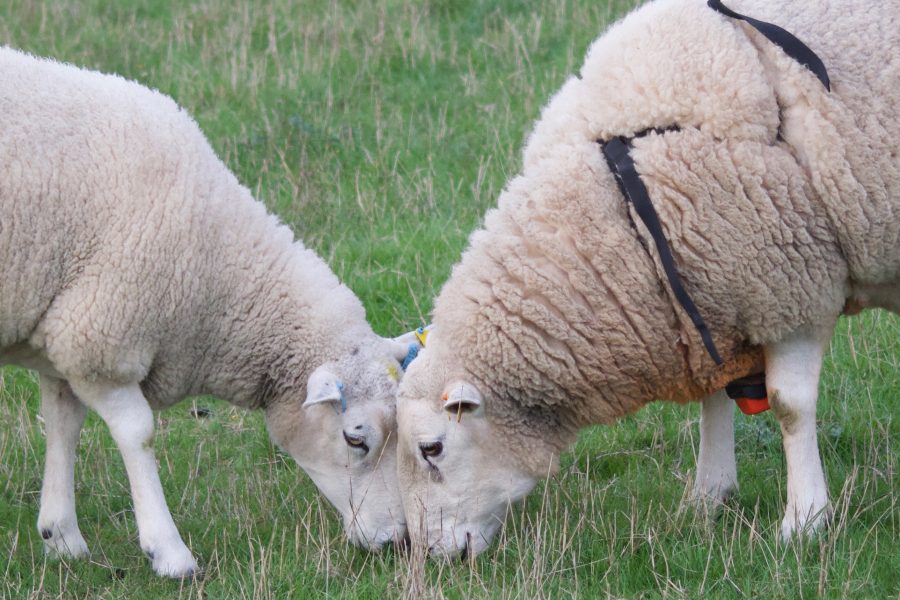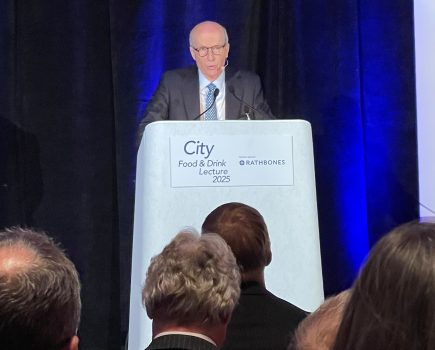As we come towards the year’s end and considerations turn to Christmas, just give a thought for the humble sheep, an inevitable part of our festive scenery. Ever since their domestication from the Asiatic Mouflon some ten millennia ago, nomadic pastoralists with their flocks of sheep would have been omnipresent in their Middle Eastern homeland, a part of daily life, so why should they not be represented at the Nativity? Such ubiquity can sadly result in the poor sheep simply becoming, quite undeservedly, part of the ‘wallpaper’, merging into the background, particularly for those that don’t have to deal with them on a daily basis.
Although now an ever-present feature in our countryside, sheep are (were) alien to our British shores. Their origins were in northern Mesopotamia; we have no native sheep, neither extant nor extinct, so how did they arrive here and how did we develop the range of types, shapes, sizes, colours, etc. that we see today?
It’s a long story, but one that commenced about 6,000 years ago with the arrival of Celtic immigrants to our shores; coming from the Iberian peninsular and central Europe, they were the first to introduce the notion of farming to the Britons. But they didn’t just bring ideas; they carried with them seeds for new agricultural plants, wheat, barley etc. and their livestock, the first sheep to graze on Britain’s grasslands. Somewhat different from the original domesticates, they had changed and adapted somewhat in their four millennia journey out of Asia and across Europe; but they were still what we would regard as primitives, somewhat akin to the Soay and all basically the same type of sheep.
They were certainly not the diverse range of breeds and types that we have today, a situation that was significantly unaltered until the Romans arrived. No doubt local variations arose because of geographical isolation and poor inter-regional communication. Various breeders of the time would undoubtedly have favoured different types and quite a lot can change over 4,000 years. But, as with any takeover, the new occupiers began to change things; the Romans introduced the Tarentine (probably also the antecedent of the Merino).
Quite unlike our by now native type, the Tarentine were bigger, white, fine woolled, polled ewes with long tails. It was an introduction that changed both the looks and the fortunes of the British sheep flock forever, bringing benefits that persist until today. The introduction of Tarentine genetics gave rise, eventually, to all our native longwool breeds; the Romney (probably the first), the Cotswold, Lincoln, Devon and Cornwall and Leicester: breeds that would dominate the Medieval wool trade, the main driver of the British economy, for hundreds of years.
Later immigrants in the south, Saxons, Angles and Jutes, no doubt introduced their own sheep, probably similar to our original native sheep, but their contribution to British sheep breeding, if any, is largely lost in the mists of time. The situation in the North was a little different, with Viking introductions having somewhat more of an impact, their small, dark-faced and horned sheep making a huge contribution to the range of black and white faced sheep we find today on the Pennines and further north into Scotland, including the Herdwick, which owes its distinctiveness to some later additions.
These two genetic introductions made an enormous contribution to the diversity of our British breeds and to shaping the direction of the sheep industry, a process boosted once again by geographical isolation of flocks, with sheep evolving into differing local types adapted to local conditions.
As things progressed, the wool trade continued to dominate the British economy and eventually it was wool and wool manufacturing that precipitated the industrial revolution. With industrialisation came an increase in urban populations, all of whom needed to be fed; agriculture thrived, benefiting from the new and growing markets, a process that drove agricultural improvements, not least of which was the application of scientific principles to animal breeding, producing the next major leap forward in breed development.
Two notable breeders in the mid-18th century made truly outstanding contributions to sheep breeds of Britain; the first was Robert Bakewell of Dishley, Leicestershire, who produced the Dishley Leicester (the modern Leicester Longwool), the antecedent of the Wensleydale, Teeswater, Blue Faced and Border Leicester, all important in the production of modern hybrid commercial ewes (mules and halfbreds). The other was John Elman, of Glynde in Sussex, who established the Southdown, a sheep that made the sheep that gave rise to the development of the British Down breeds, the Hampshire, Dorset and Oxford Downs and the most famous of them all, the Suffolk. Two sheep breeders who shaped the future direction and success of the sheep industry for hundreds of years, not just in Britain but globally, an influence that has endured until today.
Just as a footnote, the success in some areas of the sheep sector, notably the breeding of sheep for global export markets, generated problems elsewhere. Many breeds became rather too small (now remedied); this was not a problem until we joined the EEC (as it was) when we became the sheep farm of Europe, although our lambs didn’t really suit continental requirements, so we imported continental breeds to produce larger and leaner lambs for export. The irony of this is that of the range of continental breeds we imported, some 70% carried Leicester genetics and 30% Southdown plus a smattering of Suffolk, Wensleydale, Lincoln, Romney and Blue Faced Leicester. So let’s raise a glass of Christmas cheer to toast our humble sheep.







